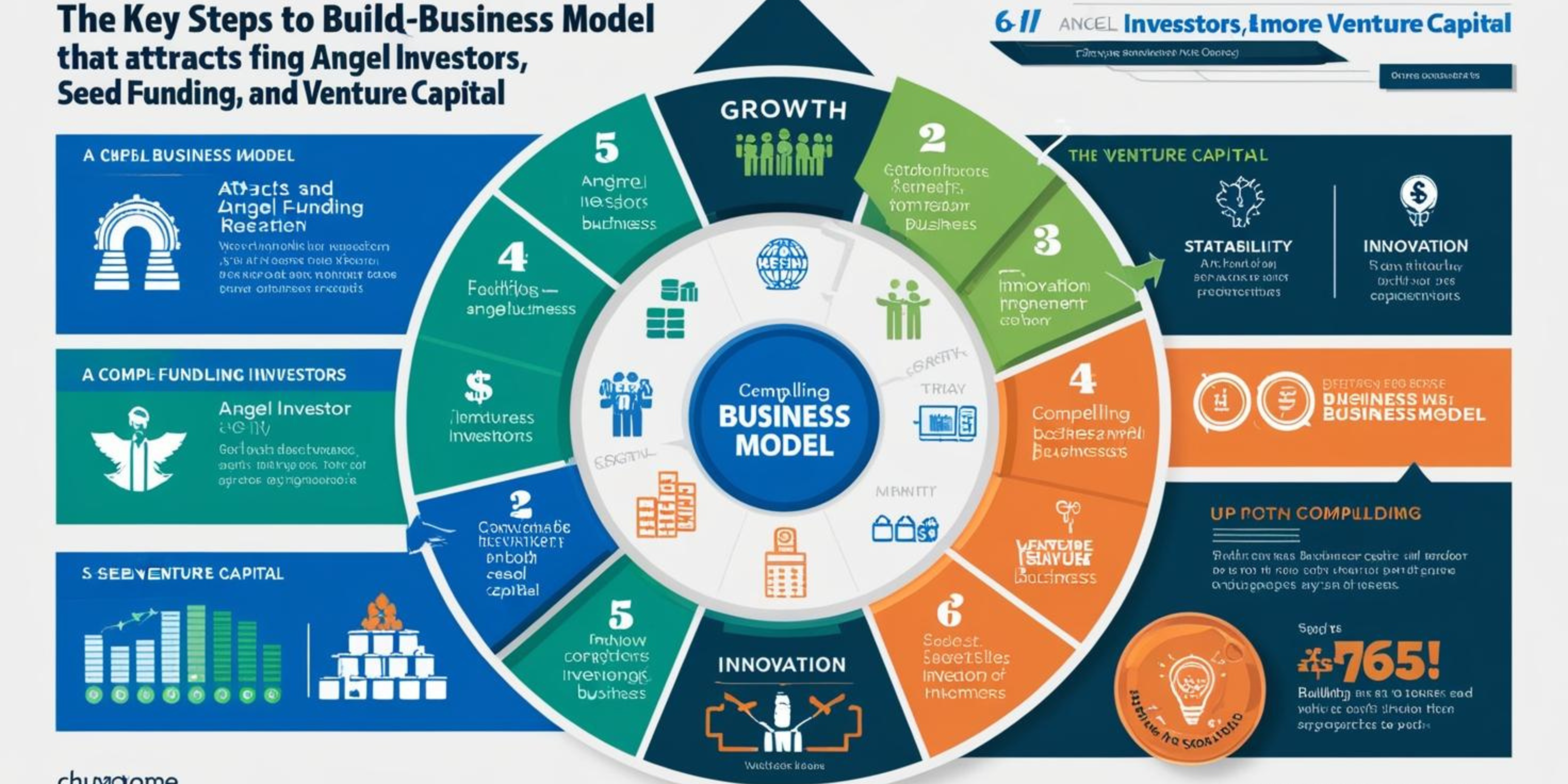How to Build a Business Model That Attracts Angel Investors, Seed Funding, and Venture Capital 🚀
Master

Creating a business model that can justify venture investment—from angel investment to seed funding and eventually venture capital—requires demonstrating clear potential for scalability, profitability, and returns on investment. Here’s a step-by-step approach:
1. Define a Scalable Market Opportunity
• Action: Show that your business addresses a large and growing market.
• How to Justify Investment:
• Conduct market research to calculate your Total Addressable Market (TAM), Serviceable Addressable Market (SAM), and Serviceable Obtainable Market (SOM).
• Present trends and data that demonstrate market growth.
• Highlight pain points in the market and how your product uniquely addresses them.
2. Establish a Clear Value Proposition
• Action: Explain why your product or service is essential for your target customers.
• How to Justify Investment:
• Define how your offering solves a specific problem or meets a critical need.
• Highlight unique features, benefits, or innovations that differentiate you from competitors.
• Use customer testimonials, pilot program results, or initial traction data to validate demand.
3. Build a Repeatable and Scalable Business Model
• Action: Ensure your business model can grow without a proportional increase in costs.
• How to Justify Investment:
• Demonstrate how revenue will grow exponentially while costs grow linearly or remain stable.
• Highlight scalable aspects of your model, such as technology, automation, or platform-based approaches.
• Include metrics like Customer Acquisition Cost (CAC) and Lifetime Value (LTV) to show efficiency and sustainability.
4. Show a Path to Early Traction
• Action: Provide evidence that your business is gaining momentum.
• How to Justify Investment:
• Share early revenue numbers, user growth metrics, or pre-orders.
• Present customer engagement statistics, such as retention rates or Net Promoter Scores (NPS).
• Demonstrate proof of concept through partnerships, collaborations, or pilot programs.
5. Develop a Strong Go-To-Market Strategy
• Action: Explain how you will acquire, retain, and scale your customer base.
• How to Justify Investment:
• Present a clear strategy for marketing, sales, and distribution.
• Include channel performance metrics, such as ROI on digital campaigns or sales conversion rates.
• Show how the strategy aligns with your business model and scales with investment.
6. Create a Financial Model That Projects ROI
• Action: Build a financial plan that highlights profitability and growth over time.
• How to Justify Investment:
• Include projections for revenue, expenses, and profit margins over 3–5 years.
• Show break-even points, funding requirements, and potential exit scenarios.
• Demonstrate attractive Internal Rate of Return (IRR) or ROI for investors, emphasizing their potential gains.
7. Showcase the Team
• Action: Highlight the experience and expertise of your founding team.
• How to Justify Investment:
• Prove the team’s ability to execute through past achievements, relevant industry experience, or successful startups.
• Include advisors or key hires who bring credibility and domain expertise.
• Highlight your team’s passion, vision, and commitment.
8. Align Milestones with Investment Stages
• Action: Plan milestones that align with each funding round.
• How to Justify Investment:
• Angel Investment: Focus on proving the idea, building a prototype, or validating the market.
• Seed Funding: Emphasize achieving product-market fit, generating initial revenue, or building traction.
• Venture Capital: Highlight scaling efforts, market penetration, and aggressive growth plans.
• Clearly define how funds from each round will be used and what metrics will be achieved.
9. Present a Clear Exit Strategy
• Action: Outline potential paths for investors to realize returns.
• How to Justify Investment:
• Highlight potential exits like acquisitions, mergers, or IPOs.
• Identify comparable companies that have achieved successful exits in your industry.
• Emphasize how your business model and market position make you an attractive acquisition target.
10. Mitigate Risks and Address Concerns
• Action: Acknowledge potential risks and how you’ll manage them.
• How to Justify Investment:
• Include contingency plans for market changes, competition, or operational challenges.
• Demonstrate a deep understanding of your industry and potential obstacles.
• Build trust by showing transparency and readiness to adapt.
Key Metrics Investors Look For
1. Revenue Metrics: Monthly Recurring Revenue (MRR), Annual Recurring Revenue (ARR).
2. Customer Metrics: CAC, LTV, retention rates, churn rates.
3. Market Metrics: Market share, penetration rates.
4. Profitability Metrics: Gross margins, EBITDA, unit economics.
5. Growth Metrics: Year-over-year revenue growth, user acquisition growth rates.
Summary
To justify venture investment at any stage, your business model must demonstrate:
1. Scalability: Ability to grow revenue without proportionally increasing costs.
2. Traction: Evidence of demand, such as early revenue or user adoption.
3. Market Opportunity: A large, growing market with clear potential for dominance.
4. Strong Team: Founders and advisors capable of executing the vision.
5. ROI Potential: Clear pathways to profitability and attractive returns for investors.
By aligning your business model with investor expectations, you’ll increase the likelihood of securing angel, seed, and VC funding as your startup progresses.